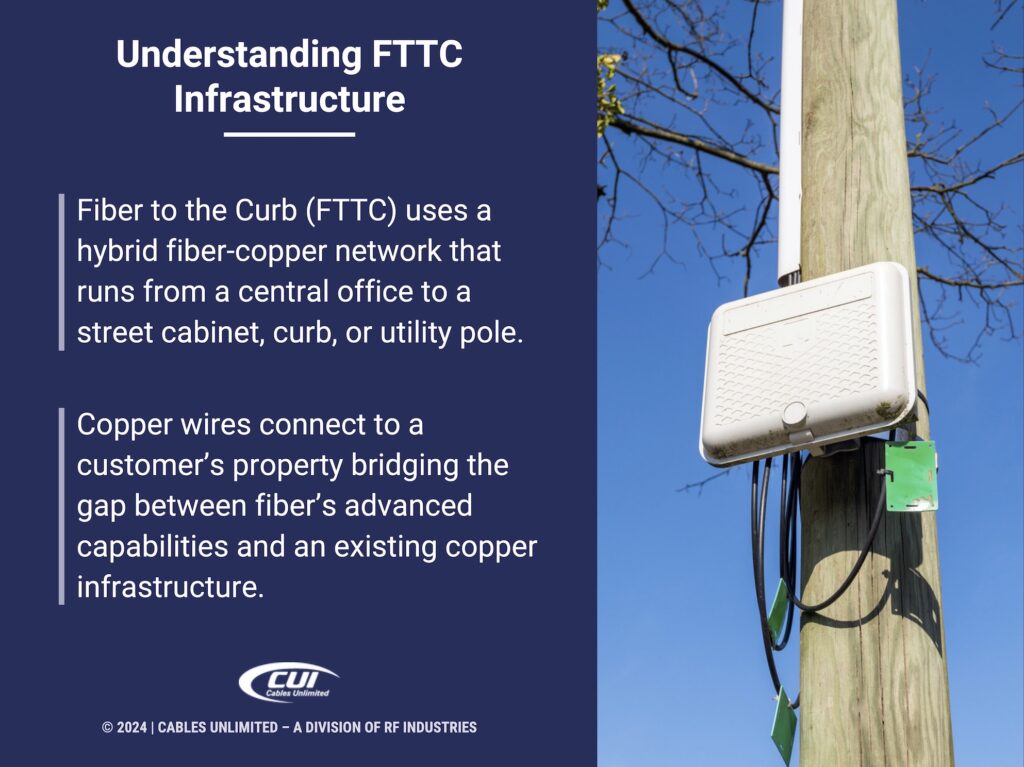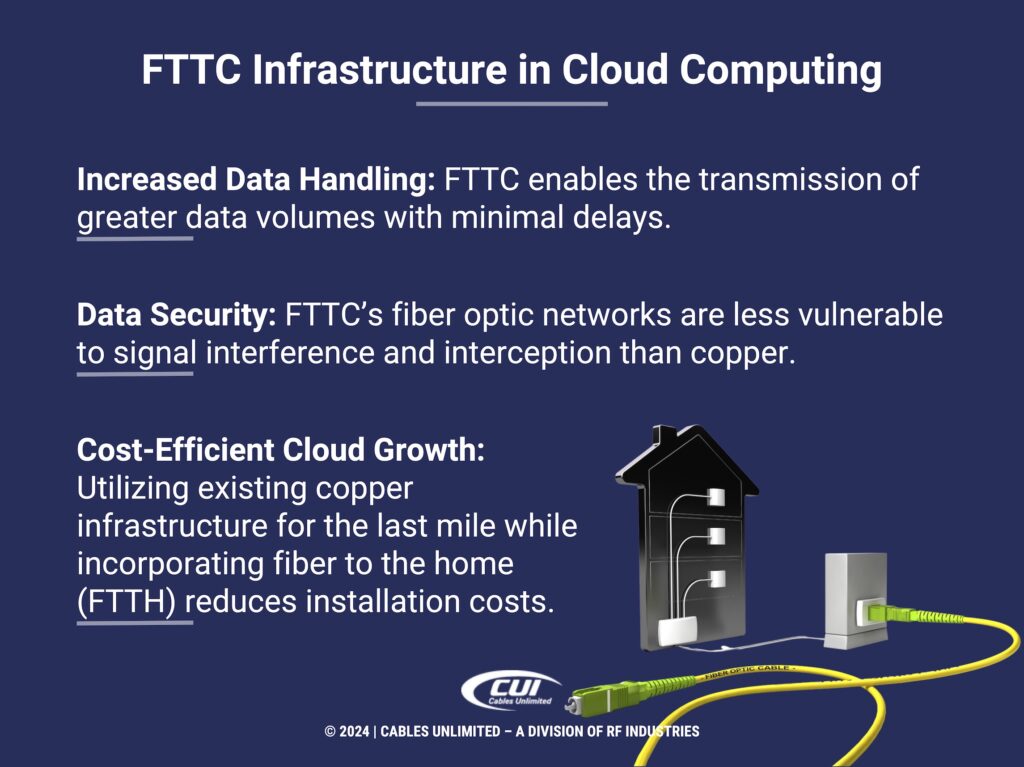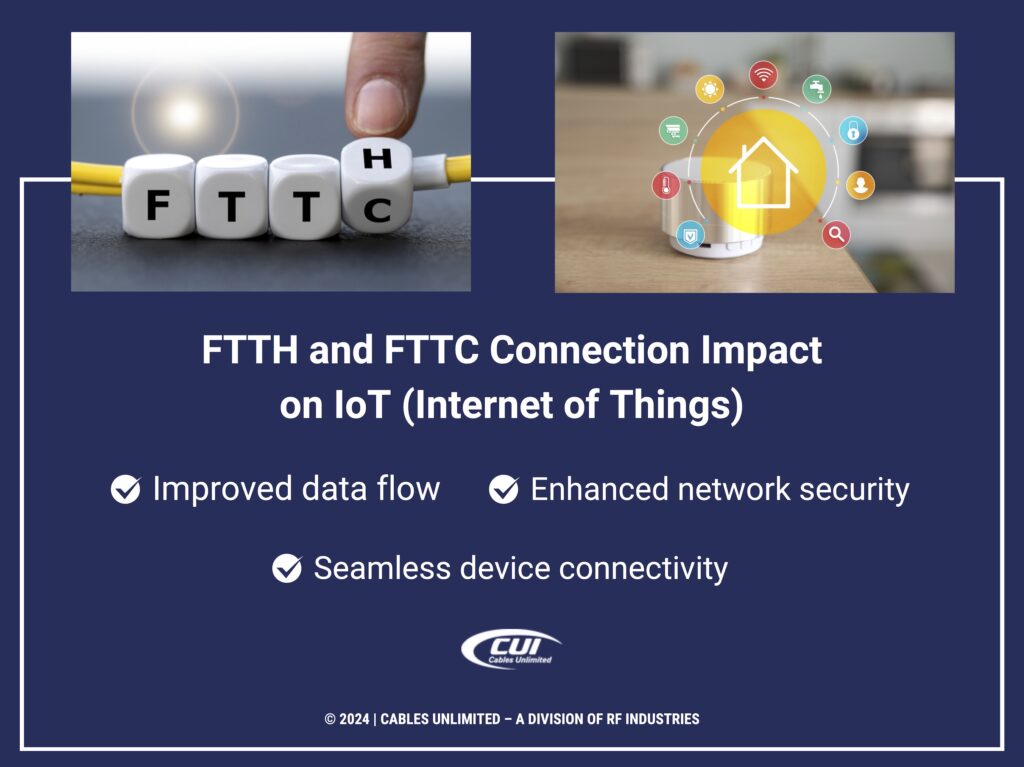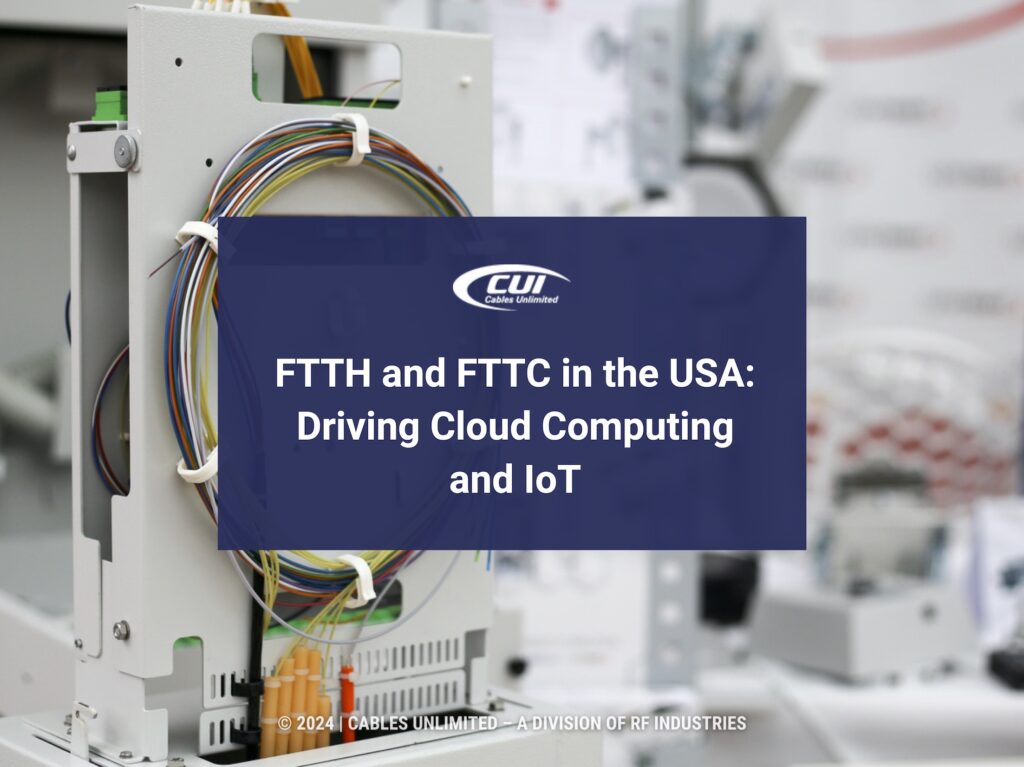By 2025, it is estimated that the global data volume will reach 175 zettabytes, largely driven by cloud computing and the growth of IoT devices. The implementation of Fiber to the Curb (FTTC) is already underway and will continue to play a transformative role in the future of cloud computing and the Internet of Things (IoT) across the USA. As businesses transition to more data-heavy applications, the need for reliable, high-speed data transfer through fiber networks is at an all-time high. Organizations can’t afford to fall behind. This article discusses the impact of FTTC and how businesses utilize fiber to the home (FTTH) solutions to improve connectivity.
Understanding FTTC Infrastructure
Fiber to the Curb (FTTC) uses a hybrid fiber-copper network. These fiber optic cables run from the central office to a street cabinet, curb, or utility pole. From there, copper wires connect to your customer’s property, bridging the gap that connects the advanced fiber capabilities and legacy copper infrastructure.
- Benefits for Business: FTTC offers higher transmission speeds than traditional copper, giving your infrastructure the backbone for cloud computing and IoT applications. This hybrid solution ensures faster data transfer without the need for an entire network overhaul.
- Scalability: FTTC connections can also handle increased data volumes as the network grows over time. This is a requirement for expanding IoT systems and cloud computing platforms.

FTTC Infrastructure in Cloud Computing
Cloud computing demands very robust data transmission solutions. FTTC is one of the best options when the infrastructure you’re building requires cloud infrastructure. That’s thanks to its capacity to maintain consistent, high-speed data transfers.
Increased Data Handling
As your end users increase their reliance on cloud-based platforms, the demand for seamless data uploads and downloads grows. FTTC infrastructure supports this by enabling the transmission of higher data volumes with minimal delays. This is especially important when they use real-time applications and every second matters. Whether you need your network to manage large databases or conduct frequent cloud backups, the higher bandwidth provided helps with smooth data handling. Ultimately, it prevents slowdowns and stays efficient even during peak data usage.
Data Security
One of the most significant advantages of FTTC over traditional copper connections is the level of security it provides. Fiber optic cables used in FTTC networks are much less vulnerable to signal interference and interception than copper. This added security is essential for companies that handle sensitive data—whether it’s customer information, intellectual property, or financial records.
With fiber optic cables, the risk of signal leakage is almost non-existent, ensuring that your business data remains private and protected. In a world where cyber threats are ever-present, upgrading to FTTC adds an essential layer of security to your cloud operations.

Cost-Efficient Cloud Growth
Expanding your cloud operations often involves scaling your network infrastructure. FTTC provides a cost-effective path for this expansion without requiring a complete overhaul of your system. Utilizing existing copper infrastructure for the last mile while incorporating fiber to the home (FTTH) or curb reduces installation costs without sacrificing performance. This hybrid approach allows you to improve cloud presence with minimal disruption and maximum efficiency. Whether you are adding new cloud services or scaling the infrastructure data capacity, FTTC allows your network to handle the growth cost-effectively.
FTTH and FTTC Connection Impact on IoT (Internet of Things)
Having an FTTC infrastructure becomes an enabler for all of the new IoT applications coming into existence on a daily basis. The ever-increasing number of connected devices, sensors, and machines in industries like healthcare, manufacturing, and agriculture means that end users need reliable network solutions like FTTC.
Seamless Device Connectivity
IoT devices need a stable and fast connection to function effectively. This is especially true in industrial or business settings where downtime leads to costly delays. FTTC helps ensure that your infrastructure transmits data between IoT devices and centralized cloud platforms without significant interruptions. FTTC’s reliable network connectivity helps maintain operational efficiency. By utilizing an FTTC infrastructure, you ensure that your IoT ecosystem can function without the latency or disruptions that can affect lower-grade networks.

Improved Data Flow
In order for IoT systems to be effective, all of the required data needs to move very quickly and consistently between the connected devices and the cloud. With FTTC, you get real-time communication, given the reduced signal loss and interference, allowing data to flow more efficiently. This is extremely important when your network relies on IoT automation, and every second matters for productivity.
Whether your network will support IoT functions such as monitoring equipment, tracking shipments, or managing smart devices in real time, FTTC helps ensure that data is processed quickly. The resulting reduction in data lag improves overall system responsiveness, helping you stay competitive in the automated market.
Enhanced Network Security
IoT devices introduce more endpoints into your network, increasing the potential attack surface for cyber threats. FTTC mitigates this risk by providing the robust security features of fiber optic cables, which are far less vulnerable to external interference or eavesdropping than their copper counterparts. For businesses that rely on IoT for critical functions, such as healthcare or industrial automation, this added layer of security is vital. Protect your IoT data and devices by integrating FTTC into your network, ensuring a secure flow of information from end to end.
Choosing the Right Data Cable Manufacturers in the USA
When picking a cable provider for your infrastructure, you need a company like Cables Unlimited that meets your needs with customizable solutions. As the leading fiber cable manufacturer in the USA, we provide customizable signal cables and data cables designed to integrate seamlessly with your infrastructure. Whether you’re deploying FTTH or robotic cables for industrial IoT applications doesn’t matter—choose a provider that rigorously tests its products for durability, flexibility, and performance. 
Empower Your Business with Reliable FTTC Solutions Today
The adoption of FTTC infrastructure is extremely important when your customers are looking to increase their cloud computing and IoT capabilities. With the demand for faster, more reliable networks growing, investing in Fiber to the Home and FTTC solutions allows you to keep their operations competitive. Contact us today to find out how working with the best fiber cable manufacturer in the USA can help you unlock your infrastructure success.




